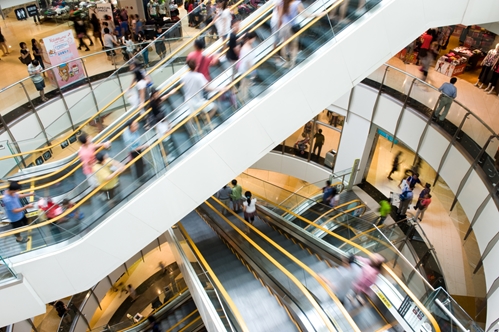The role of video surveillance in retail and commerce
Dec 24, 2015
 Any industry or vertical that has assets worth keeping a close eye on can benefit from a reliable video surveillance solution. This includes government agencies with top secret data, transportation hubs that serve millions of people every year, health care facilities in which the patient's well-being is the top priority, and any institution in the commercial sector that faces the constant threat of burglary and theft.
Any industry or vertical that has assets worth keeping a close eye on can benefit from a reliable video surveillance solution. This includes government agencies with top secret data, transportation hubs that serve millions of people every year, health care facilities in which the patient's well-being is the top priority, and any institution in the commercial sector that faces the constant threat of burglary and theft.
Here are just a few of the ways video surveillance solutions can serve organizations in retail and commerce:
Theft deterrents
Shoplifting is a threat that merchants face on a daily basis. The National Association for Shoplifting Prevention estimates that there are more than 27 million shoplifters in the U.S. today. Many serial shoplifters have reported that they only get caught one time out of every 48 times they steal. While adults make up the majority of shoplifters, according to the NASP, 25 percent of shoplifters are minors. There is no set profile for shoplifters, either. Employee theft is a regular occurrence for many retailers, and one that must be factored into shrinkage on a monthly or annual basis.
One method that retail organizations, gas station merchants and family-owned shops have all used to mitigate the losses caused by theft is through the installation of video surveillance. A reliable surveillance solution serves several functions. Firstly, it may act as a deterrent for theft. Typically, shoplifting is an impulsive crime, according to NASP. Much of the theft that occurs in retail organizations is simply a matter of opportunity. If shoppers and employees are aware that they're on camera, they may feel less inclined to seize such an opportunity to steal from a merchant. If not, management can review video feeds to create a profile of the suspect for purposes of future security monitoring.
Protection at the point of sale
As the center of commerce in any brick-and-mortar business, the point of sale needs constant security monitoring. Direct threats to profit may include employee theft from the register or unauthorized access by shoppers. This is especially true as hackers continue to target the POS in their attempts to pilfer payment data. Should a cyber criminal somehow manage to sneak into an unmonitored POS terminal, he or she could hypothetically download or install malware that may lead to data theft.
With video surveillance, management can keep an eye on customer service kiosks and cash registers remotely. By reviewing a feed at the end of a busy day, they may be able to catch nefarious cyberactivity at the POS sooner rather than later – or worse, before it's too late.
Security monitoring for fairs and pop-up shops
Not all commerce occurs inside stores and restaurants. Street festivals, fairs and pop-up shops also need security monitoring. In such situations, wireless surveillance can provide a much-needed service to vendors – especially for weekly, monthly or annual shopping events. The benefit of a wireless surveillance solution is that it is easy to deploy, making it ideal for sprawling venues such as public parks and town squares, open-air markets or any other spaces that may host intermittent shopping fairs. Wireless surveillance provides all the same benefits the traditional surveillance solutions supply, and with just as much reliability – especially when mesh topology is added to the equation. With a wireless mesh network, IP cameras can stay up and running in the event of a disruption thanks to the strategic placement of nodes that can reroute network traffic.
The use cases mentioned above barely skim the surface of potential use cases for video surveillance in retail and commerce. Nevertheless, they highlight the versatility of video surveillance, and the inherent benefits of security monitoring solutions.

